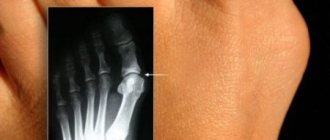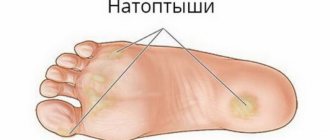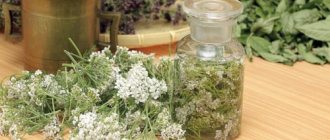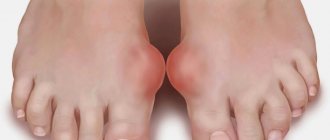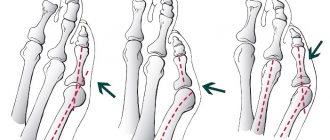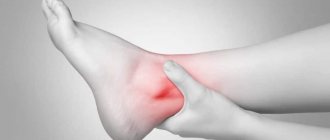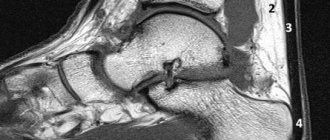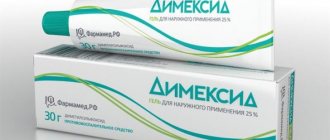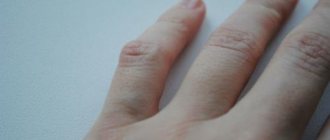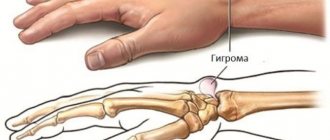Orthopedics Symptoms Services and prices Specialists Diseases
A corn is the accumulation and growth of compacted skin tissue, which manifests itself as a result of the excessive production of epidermal cells. These pathological changes occur due to damage to the skin and subcutaneous tissues. The main factor in violating the integrity of the skin is considered to be compression, which occurs due to inadequate distribution of the load on the human foot.
Causes of corns formation
The formation of corns is associated with excessive growth and accumulation of dead skin cells on the foot due to compression of the foot and its repeated mechanical irritation.
The main causes of corns:
- wearing the wrong shoes;
- increased physical activity;
- overweight.
Wearing improperly fitted shoes
When you step, the foot is the first to bear the load, supporting the weight of the entire body. In this case, the heel takes on the load of about eighty percent of the total weight of the human body. The toe accounts for about twenty percent of the body weight. When wearing shoes with heels measuring more than eight centimeters, the load on parts of the foot changes in the opposite direction. In this case, excessive pressure on the toe causes the metatarsal bones to spread apart and, under the weight of the weight, crush the skin against the sole of the shoe. Due to prolonged pressure on the toe, skin cells begin to multiply and divide excessively, subsequently forming a corn.
Also, the formation of corns can be due to prolonged wearing of shoes with narrow toes. At the same time, tight shoes, pinching the toes, mechanically deform the transverse arch of the foot.
Increased physical activity
Often, corns occur in people whose profession requires them to lead an active lifestyle. These could be athletes who spend most of their time in competitions and training, or military personnel who walk on the parade ground every day.
Overweight
Excessive human body weight puts constant stress on the feet. Under the influence of excess weight, the arch of the foot flattens, and such people develop flat feet, which causes constant friction between the skin and shoes when walking. Regular friction, as well as excessive pressure placed on the feet, leads to the fact that certain areas of the skin of the foot become rough and grow, manifesting themselves in the form of corns.
Therapy at home
Before starting self-treatment, you should consult a doctor to correctly determine the cause of the formation and choose the most effective method of eliminating it.
Ointments and liquids
You can get rid of corns using local remedies. These can be medicinal ointments, creams and gels. They contain ingredients that can soften the skin and activate its restoration process. These are lanolin, petroleum jelly, and medicinal plant extracts. In addition, local agents have an anti-inflammatory and disinfectant effect and can relieve pain.
They should be applied directly to the affected areas, after steaming the skin, then apply a patch or bandage on top for at least 3 hours. Keratolytic ointment can be left overnight. After this time, the patch should be removed and the skin cleaned with pumice. The procedure is carried out daily until the desired result is achieved.
To combat corns, medications in liquid form are often used. The most effective are products that contain acetic and salicylic acid.
Special plasters
These are the most convenient medical products. They effectively help remove corns, especially at an early stage of development. Special medicinal compounds are used to impregnate the patches, which have a softening effect on rough tissues. In addition, they protect injured areas from infection.
Mechanical removal tools
You can get rid of rough skin with a hardware pedicure. The use of special tools allows you to completely remove the corns, even if its core is located deep. The master treats the skin with a disinfectant composition and uses a drill to clean off rough areas. Depending on the degree of damage, a fine-grained or coarse-grained drill is selected.
This method completely eliminates infection. The procedure takes place without pain or discomfort. Regular use will help you get rid of dry calluses forever.
Socks-masks
If you don’t want to make baths or stick on a patch, you can use special socks that help get rid of dead tissue. They are impregnated with a special medicinal composition, which includes extracts of chamomile, sage and burdock, lactic acid, and citrus essential oils.
Their impact spreads evenly over the entire surface of the foot. The skin becomes softer and blood circulation improves. Thanks to the extracts of medicinal herbs included in their composition, the socks have an antifungal, exfoliating and relaxing effect, and relieve swelling.
You should wear socks for at least an hour. Then you need to remove them and wash your feet. The procedure can be repeated no earlier than after 2 weeks. This will require a new pair.
Specialized finger pads
The use of special pads helps to evenly distribute the load and protect the delicate skin under the fingers from friction and the formation of corns. They are comfortable, fit snugly to the foot, correct the position of the toes, and do not spoil the aesthetic appearance even when wearing sandals.
If corns have already formed, then overlay models with special holes will help reduce discomfort. They should be applied to the foot so that the callus is in the center of the hole.
Diagnosis
Treatment can begin only after establishing the exact cause of the formation of the corn. First of all, the doctor examines the affected area. At the same time, he may prescribe a blood test for glucose levels and a test for the presence of antibodies to the immunodeficiency virus and papillomatosis. If the patient does not suffer from diabetes, then he may be prescribed a blood test to determine the level of glycated hemoglobin.
The research results will be taken into account when drawing up a treatment plan.
Dry patches between the toes
The skin between the fingers is delicate and rubs easily. If a person wears narrow or tight shoes, a wet callus quickly appears.
In addition to new shoes, the reason will be the transition from autumn shoes to summer options. Wearing shoes on bare feet. Sweaty feet. These problems are easy to fix.
It is more difficult if the cause is a medical problem. For example, a foot deformity or a problem with the musculoskeletal system.
You cannot cut the skin to avoid infection.
It is better to address the problem comprehensively. Treatment with baths and pharmaceutical keratolytic agents, which contain salicylic acid.
To prepare such a bath you will need salt, soda, and warm water. You need to dissolve salt and soda in water. Place your feet there for 20-30 minutes. Gently rub the softened areas with pumice.
Then lubricate the damaged area with keratolytic ointment and secure the foot with bandages. Or use patches. You can buy them at any pharmacy.
The main principle of this work is to soften the callus. To get rid of these procedures, you need to do them on a regular basis. In advanced cases, this may not be enough. Plasters are also effective against calluses.
Complex "Scholl"
Advertising:
There are many home treatment options for calluses. These are either products that remove dead and hardened skin, or substances that relieve pain and soften keratinization.
Thanks to the Scholl complex, you can use these methods separately or simultaneously.
Suitable treatment is provided by Scholl Express 2-in-1. The package contains a double-action nail file + urea-based liquid, relieves pain and removes calluses.
First, apply the liquid to the corns to soften the hard skin, then use a file to carefully remove the horny areas. The liquid contains salicylic acid, which perfectly softens and moisturizes the skin.
The Scholl complex is suitable for eliminating not only core calluses. It helps to cope with other types of skin formations, soften and smooth the heels.
“Scholl” gel pads will reduce pressure on the foot when walking and, with regular use, will provide pain relief. To soften keratinization around the toes, you can use Scholl foot cream. It moisturizes and softens the skin.
Treatment of calluses on the feet
Today, there are quick and painless methods for getting rid of calluses, both in a clinic and at home. In the hospital, the doctor will suggest removing the lump using freezing (cryodestruction) or using a laser device. To prevent lumps from growing, it is necessary to eliminate the cause of their appearance, for example, stop wearing tight and uncomfortable shoes.
Treatment with pharmaceutical drugs
The pharmacy sells many ointments, gels and creams based on salicylic acid, which softens rough skin. Before applying products to damaged areas, it is advisable to steam your feet in warm water with the addition of regular baking soda or chamomile decoction, dry and remove the top layer with a stiff brush or stone. Treatment methods differ depending on the type of callus:
Dry. You can get rid of the compaction by first steaming your foot and removing the upper keratinized layer using pumice. At night, apply salicylic acid ointments or use an adhesive bandage against dry formations. The patch has a gentler effect on healthy tissue and is more effective, since it can be left in place for several days, during which the dry crust completely dissolves.
Rod. To completely remove the inner part of the rod, you can use keratolytic agents for external use or Vishnevsky ointment, which literally “pulls out” the root. The procedure is standard, as for dry calluses: bath, applying ointment, sealing it overnight. Adhesive plasters specially designed for core corns help better. Old formations will have to be processed several times. Sometimes you will need the help of a doctor.
Mermen
The bubble should not be pierced, but if it interferes greatly, then do it very carefully. Pre-sterilize piercing instruments
Make a puncture near the base, do not squeeze out the liquid. Lubricate the damaged area with brilliant green and cover with a band-aid. If the skin has burst, carefully trim it with nail scissors, apply streptocide ointment, which will dry the wound, and leave it in this position for several hours. If there is an open wound, do not use alcohol, iodine or brilliant green. It is enough to moisten a cotton swab in a 3% solution of hydrogen peroxide and disinfect the surface. You can also use patches, but in this case, access to oxygen promotes rapid healing.
Treatment at home with folk remedies
People have long noticed that baths and the application of plants help in treating dense formations on the feet. But for each type of callus there are its own recipes:
Dry
Carefully lubricate keratinized areas with celandine juice several times a day. After a warm bath, apply a lemon wedge or a paste of oven-baked garlic to the callus.
Carry out the procedure at night until complete recovery. Helps eliminate dry formation and buildup of onion skins infused in vinegar for 14 days.
Rod. Soap and soda (2-3 tablespoons per 1 liter of water) or mustard (2 tablespoons per liter of water) half-hour baths help to cope with the rod, after which generously lubricate the affected area with cream and seal with a band-aid. Make compresses from garlic and onion pulp (crush fresh cloves using a crusher). The rod usually comes out after 8-10 sessions.
Mermen. Wet calluses should be treated with aloe or Kalanchoe juice, after applying an antiseptic to avoid possible infection. Applying a washed plantain leaf or pine oleoresin helps relieve pain.
Preventing the recurrence of calluses on the feet
Avoiding calluses is not difficult. To do this, just monitor the condition of your feet and follow simple rules:
- Wear shoes made from natural, breathable materials that do not chafe your feet. Shoes should have a comfortable last and thick sole;
- The optimal shoe heel height for daily use is 5-7 cm;
- When trying it on in the store, feel free to walk around a little. Choose the right size and avoid narrow-toed, tight models that squeeze your fingers;
- If your feet sweat a lot, use talcum powder or a drying spray. Baths with oak bark decoction will help reduce sweating;
- If you are prone to keratinization of the skin on your feet, it is advisable to take warm baths with the addition of sea salt before going to bed. After steaming, you need to remove the rough layer with pumice and anoint it with oil (olive, corn, linseed) or soft cream.
Our specialists
- Kiani Ali
Candidate of Medical Sciences, laser medicine specialist, dermatocosmetologist.
Sign up
- Stepanova Inna Igorevna
Candidate of Medical Sciences, maxillofacial surgeon, specialist in laser medicine.
Sign up
- Fedotova Marina Andreevna
Surgeon, dermatocosmetologist, laser medicine specialist
Sign up
- Popovkin Pavel Sergeevich
Surgeon, oncologist, laser medicine specialist.
Sign up
Methods for treating corns
You can get rid of this type of callus at home. But it is recommended to do this only in the absence of severe pain and the small size of the affected area. Removing corns on your own can cause damage to the epidermis and infection. Therefore, you should seek the advice of a medical professional before taking any action.
Before starting treatment, you need to do the following:
- reduce the load on the foot as much as possible, thereby not provoking further growth of hard callus;
- steaming the damaged area to soften dead skin;
- the use of special patches to protect against friction while wearing shoes;
- make sure there are no open wounds at the site of the callus, if necessary, treat them and apply a patch.
The worst scenario for the development of the disease is that pain appears without mechanical stress on the leg. In this case, you should immediately consult a doctor. He will determine the treatment method and, possibly, remove the corn.
Medicines and procedures
Before getting rid of corns, you should consult a doctor. This may not be done if the defect appeared relatively recently and does not cause severe pain. The essence of the treatment is to soften the callus tissue and subsequent mechanical removal. As an alternative, you can consider using special medical devices.
The most effective means and methods that can be used to treat corns:
- Cream "Doctor". It is applied to the damaged area of the skin, an adhesive plaster is applied to protect against premature removal, and a thick sock is put on top. The ointment contains oak bark extract and celandine. They soften the callus, which in the future will allow you to get rid of it yourself.
- Bensalitin ointment. The main ingredients are benzoic and salicylic acids. They have an intense effect on hard calluses, but can damage normal skin. Before use, protect the treatment area with a bandage. The maximum action time is 3 hours.
- Using special patches. Their active region includes the components described above. The advantage is that after softening, the corns are removed along with the patch. The disadvantage is the painful sensations that occur when removing the patch.
- Medical intervention - the use of cryotherapy or laser removal. The most effective ways. They should be considered first before treating corns at home. The destruction of the structure occurs under the influence of nitrogen or laser radiation. The methods are painless and quick.
If treated incorrectly, pus may appear at the site of the corn. The first sign is the formation of inflammation around the callus and increased pain. Given the constant load on the leg, this may cause the infection to spread to other areas of the skin.
Treatment with folk remedies
It must be remembered that corns are the most severe form of callus. Improper self-treatment can lead to worsening of the condition. When analyzing traditional methods, one should take into account not only their effectiveness, but also their safety.
Recommended methods for treating corns at home in the early stages of the defect:
- Steaming the feet. Feet are immersed in hot water for 10-15 minutes. After steaming, apply a lemon peel to the affected area. Additionally, exfoliated tissue must be removed with an abrasive.
- Grated onion gruel. It is applied to the callus, preferably at night. After waking up, you should thoroughly rinse the corns and use pumice to get rid of the softened tissue.
- A mixture of ammonia, soap shavings and baking soda. The effect occurs with the help of a hot bath for 15-20 minutes.
- Use of aloe leaf. It is cut lengthwise and the inner part is applied to the callus. The effect is softening of tissues, reducing the intensity of pain.
- Nail scissors can be used to remove softened skin. Before doing this, they should be disinfected. If even a minor wound was caused during the cutting process, it is treated with special means.
Additionally, it is recommended to take steam baths, remove dead skin from the feet, and use special oils and creams. When staying in public places (bathhouse, swimming pool), observe basic personal hygiene measures. You must wear rubber slippers and wash thoroughly after taking a sauna or swimming in the pool. This will reduce the likelihood of infection and corns.
What complications can there be?
The callus never goes away on its own and is difficult to treat.
If you do not remove it completely, the following unpleasant consequences arise:
intense pain;- limitations in working capacity and walking;
- formation of deep cracks;
- deformations of muscle tissue, joints;
- callus infection, suppuration, osteomyelitis, erysipelas, abscess, blood poisoning.
What's happened
Indurations of the upper layer of skin are called corns. This is the result of a long process, accompanied by keratinization of tissue in places that suffer constant mechanical stress in the form of friction.
Long-term adverse effects cause cell death and the formation of rough areas of the skin. Their outlines are very unclear.
These growths cause severe pain, poor circulation, and death of epithelial cells. Particles accumulate between the toes and on the heels, causing unpleasant sensations and sometimes acute pain.
It is absolutely necessary to treat dry calluses – that’s what corns are called in everyday life. This is not difficult, since dead cells are localized in the upper layers of the skin.
Types of corns
Thickenings that cause discomfort are localized in different parts of the foot. Most often they occur:
- on the front of the sole;
- on the thumb;
- on the heels;
- on the little finger.
Regardless of location, corns come in three types:
- Rod. In appearance they look like bumps of a light yellow hue, with black dots on top. This is what the root of a callus looks like. Such corns penetrate deep into the skin, causing the owner many unpleasant moments. The occurrence is associated with increased friction, the activity of the herpes virus, and compression of the legs. It is difficult to treat.
- Plantar. In appearance, these are wide growths that resemble calluses, but do not cause pain when pressed. The causes are considered to be excessive sweating and uncomfortable shoes.
- Finger. These are thickenings localized on the fingers. At first they are almost invisible. They think about treatment only at the moment when wearing familiar shoes causes discomfort.
Main symptoms
In the early stages of development, dry calluses practically do not manifest themselves in any way. In some cases, skin pain may occur. Redness and swelling become constant companions of a person suffering from this disease.
The next stage is coarsening, changing the shade to gray-yellow. The shape of the seals may vary. Some of them do not cause any discomfort, others make walking very difficult.
In advanced cases, corns can cause cracks to appear. Compression of nerve endings, loss of sensitivity in an area of the skin, severe pain, damage to blood vessels - these are signs that, if they appear, should promptly consult a doctor.
Causes
There are several factors that provoke the occurrence of dry calluses:
- Inappropriate shoes. An error in choosing the size, an insole that is unsuitable for rigidity, an excessively high heel or, on the contrary, its absence, poor quality manufacturing are the reasons for the appearance of corns.
- Foot deformity. The presence of growths, interfering bones, and arthritis lead to the appearance of rough areas. Some areas are severely compressed by shoes, some are subject to excessive friction. The consequence of these processes is dry callus.
- Excess weight. The feet bear the main load. Weight increases friction and pressure on the feet, so people with a high body mass index develop corns quite often.
- Diabetes. Dry calluses in this disease are caused by poor circulation in the lower extremities, which, in turn, is explained by hormonal changes and metabolic disorders. Epithelial cells die too quickly, and the number of calluses is constantly increasing.
- Increased sweating of the feet. Moisture that cannot escape from tight shoes contributes to chafing of the skin. This is the main reason why people with this problem are recommended to wear shoes made from natural materials.
- Chronic diseases. Liver dysfunction, cardiovascular diseases, and diseases of the pelvic organs are often the causes of the appearance of dry calluses.
- Belonging to a profession that is at risk for this disease. These are dancers, athletes, ballerinas, all people whose feet experience enormous stress.
When choosing shoes, remember that they should be loose. The tightness provokes severe rubbing of the soles and the appearance of corns.
Main locations
Corns most often form on the feet, in places exposed to increased mechanical stress. These are raised areas of skin on the sole, in the center of the heel. They often form on the fingers. Most often, the outer side of the little finger and thumb are affected, as well as the space between the 1st and 2nd fingers or 4th and 5th on the inside.
Constantly wearing high-heeled shoes provokes roughening of the skin at the base of the toes. Tight shoes lead to the formation of corns on the big toes and on the side of the foot.
Gifts from Mother Nature and the wisdom of the ages: treatment of corns on the feet with folk remedies
If you are concerned about the question of how to cure corns on the soles of your feet, then the problem already exists, therefore, you need to do something about it so that it does not become more complex. However, if for some reason medicine is not yet available to you, folk remedies will definitely help, of which there are quite a lot and a wide variety. It is clear that this is far from the best method of eliminating calluses, but most likely there will be no harm if everything is done according to the recommendations given by true healers and witches.
Aloe guards healthy legs
For several centuries now, in almost every house on the windowsill you can find a real prickly pharmacy, that is, a flowerpot of aloe. Much has been said and written about the beneficial properties of this succulent, but few people know that it will help deal with hard calluses and corns in no time. So how to remove corns using this plant? In fact, everything is quite simple and you don’t need any special skills.
Cut off one of the lower leaves from a bush that is at least three years old, preferably so that it is juicy and fleshy. Place the aloe leaf in the refrigerator for several hours, as all the beneficial substances then become more active. Cut the leaf, remove the spines and apply the cut side to the corn. You can secure it with a bandage or plaster. By morning, the callus will soften and can be removed with a piece of pumice.
How to cure corns on your feet with potatoes
It’s great that the most ordinary potatoes, which are in the “arsenal” of any housewife, will also help get rid of corns. This gift from the American Indians has helped us more than once over its centuries-old history, and it will help us now.
Raw potatoes must be washed thoroughly, and then, without peeling, grated on the finest grater, or chopped using a blender. The resulting paste should be applied liberally to the affected area. Next, you should put a layer of polyethylene and bandage the top, but not tightly. After five or six aces, you will be able to steam your foot and remove the callus.
Coltsfoot: how to cure corns on the foot or fingers
As you know, a plant such as coltsfoot is medicinal and helps with many health problems. It will also cope with corns, and you need to use its juice. However, squeezing a sufficient amount of juice from the stems and leaves at home is quite difficult, and you will need a lot of raw materials.
Therefore, it is recommended to simply pick fresh stems and lubricate the callus with them throughout the day. By evening, the callus should become loose and soft. You can also use a paste of crushed leaves, just like with potatoes.
Common ivy to combat calluses and corns
To create the medicine, you need to collect fresh and undamaged leaves of ordinary ivy, and also wash them thoroughly. It is worth knowing that collecting material near busy highways and roads is strictly not recommended, since harmful combustion products of fuel and lubricants can accumulate in the ivy.
Fox ivy needs to be thoroughly crushed until you get a thin paste. You can use a knife, but it is better to take a blender. The rest is the same as in previous recipes. A two-layer bandage made of film and bandage should be applied for six hours, so it is advisable to do this at night. True, you will have to repeat the procedure five or six times until you manage to completely get rid of calluses.
Glycerin with ammonia will help you figure out how to remove corns on the feet
There is another very interesting recipe for which you will need to purchase glycerin at the pharmacy, as well as ammonia. There is nothing complicated in making such a medicine, so even a beginner can cope with the task. In addition to calluses, this remedy will also reduce the chance of cracks in the heels, and it will be effective for the general renewal of superficial dermal cells.
Fifty grams of glycerin should be mixed with ten drops of ammonia and shake it all thoroughly. For ten days, you need to apply the product to cleanly washed feet, which it would not hurt to pre-steam. Moreover, if the course of treatment does not help, it can be extended or even repeated.
Prevention
- The easiest way to avoid the appearance of corns on your feet is to buy quality shoes. Avoid overly narrow toes and high heels.
- It is also necessary to undergo an examination by an orthopedist-traumatologist once a year. It will help prevent the development of flat feet, which often leads to the formation of corns.
- Once a week you should get a good pedicure using a special foot file. Foot baths with plant extracts are very useful.
This article is posted for educational purposes only and does not constitute scientific material or professional medical advice.
Traditional medicine recipes
Corn calluses are more difficult to treat than other types of dry calluses. It is not always possible to cope with the problem using folk remedies, especially if the rod has penetrated deeply. This treatment method is most effective in the early stages of corns formation.
Before starting treatment, you should consult a doctor. Unwise use of traditional medicine can only worsen the situation.
Vegetables and fruits
Can be used to prepare ointments, lotions and compresses. Medicinal products made from vegetables and fruits have a softening and healing effect.
Using an onion compress gives good results. Grate the vegetable on a fine grater and apply the pulp to the problem area. Secure the top with a plaster or bandage. To increase the effectiveness of the procedure, onions should be mixed with the same amount of garlic. The course of treatment is 10-14 days.
Onions can be used in other ways. The head is cut into 4 parts and filled with vinegar. Infuse for 3 days in a cool, dark place. Use 1 part at a time, fixing with a bandage on the problem area. Leave it on all night. In the morning, clean the skin and sprinkle with talcum powder. The course of treatment is 30 days.
Raw potatoes are often used for medicinal purposes. Wash the tuber thoroughly and grate it on a fine grater. Form a cake from the resulting mass and apply to the corns for 2 hours. Then the bandage should be changed.
You can apply a lemon compress. Secure a small piece with a bandage and leave overnight. Under the influence of fruit acid, the rough area will soften, and in the morning it can be removed with pumice.
Butter and bread
It is acceptable to use any vegetable oil: sunflower, flaxseed, olive, corn. Apply oil to pre-steamed skin and put on socks. The oil should remain on the skin for 2-3 hours. The procedure is carried out daily until the problem disappears. You can immediately soak cotton socks in oil, put them on, wrap them in cling film and put on another pair. After the procedure, remove the socks and wash off the oil with warm water and soap.
The most effective remedy for getting rid of keratinized tissue is a celandine compress. The herbal paste is applied to the problem area and secured with a bandage or bandage. It should be applied carefully so as not to affect healthy tissue. To completely get rid of corns you will need at least 5 procedures.
Aloe compress can quickly soften rough skin. Cut a small leaf, wash it, cut it lengthwise and apply it to the growth. Fix and leave overnight. In the morning, remove the softened skin with a pumice stone and remove the rod with tweezers.
Healing lotions
For lotions, you can use infusions and decoctions, as well as fresh juice of medicinal plants. For example, a lotion made from dandelion or celandine juice is effective. A cotton or gauze swab is soaked in juice and applied to the corn for a few minutes. The procedure is carried out several times a day.
Herbal baths
The use of decoctions of medicinal herbs helps to effectively combat the rough layer of skin. For baths you can use infusions of chamomile, celandine, nettle, sage, thyme, and oat straw.
This remedy helps cure calluses at any stage of formation. At an early stage, the tincture will help relieve pain and reduce inflammation. When the corns have already formed, a compress from the tincture will soften the rough tissue and facilitate the cleansing process. Soak a gauze napkin with the tincture and apply to the sore spot. Leave it on all night. The course of treatment is at least 7 days.
Soda baths help quickly get rid of small seals. Dissolve 2 tbsp in a container with 1 liter of warm water. soda and 1 tbsp. grated laundry soap. Keep your feet in the water until it cools down. After the bath, treat the skin with pumice stone and apply nourishing cream. Repeat the procedure daily for 7-10 days.
Baking soda can be used as part of a medicinal compress. Grate a medium onion and add 1-2 tbsp to it. soda Stir and let sit for 15-20 minutes. Then apply the mixture to the callus. Wrap the top with film and secure. Keep for at least 3-4 hours. Then steam your feet and treat them with pumice stone.
Apple vinegar
https://www.youtube.com/watch?v=3WYySuqnaPA
Vinegar can be used as part of a medicinal mixture used for a compress. Mix equal amounts of vinegar, sea salt and baking soda. Apply the resulting mixture to the affected area and secure with a bandage. Put socks on top. The compress should be kept on all night.
Healing lotions
Effective means for treating inflamed, old and new corns are lotions. They are placed overnight after hot baths on the inflamed areas of the foot.
For lotions are used:
- decoctions of chamomile and calendula;
- juice of celandine, plantain and aloe;
- plantain leaves;
- pulp of aloe leaves;
- onion or garlic juice with honey.
For lotions made from decoctions and plant juices you need:
- soak in a medicinal liquid a piece of gauze folded several times to the size of the corn, or the entire plane of the sole;
- after steaming your legs, apply a soaked swab to the problem area;
- cover with cling film or cellophane;
- secure the lotion with a bandage and put on thick socks;
- In the morning, remove the bandage, treat your feet with pumice stone and lubricate with rich cream.
In the same sequence, you can apply aloe pulp, clearing the leaf of the hard, green peel. Plantain leaves should be pre-washed and mashed in your hands until soft.
Ways to get rid of corns using pharmaceutical products
To combat corns, medications can be used that are sold in pharmacies and are freely available without a prescription. Pharmacists can usually provide advice on choosing a cream or patch. But if you doubt the qualifications of the employee, you always have the opportunity to consult a doctor to make sure the diagnosis is correct and find out about possible methods and means of treatment.
Anti-callus creams and ointments
On the shelves of pharmacy counters there is a wide range of creams and ointments that help in the fight against calluses and rough skin on the feet. All of these products contain an active component - salicylic acid. The ideal remedy for removing corns is a cream or ointment, which, in addition to the main component, contains other active substances, for example, benzoic acid. But you should avoid getting such cream on healthy skin areas.
Rules for using ointment (cream) for corns:
- We make a foot bath with an antibacterial solution. This is necessary to soften the top, coarsened layer.
- We glue the patch so that the corns area remains open and healthy skin is protected.
- Apply a generous layer of the medicine to the affected area.
- We cover everything with a plaster, hiding the treated corns.
Patches for corns with a rod
A simple, but no less effective way to get rid of calluses on the feet is an “anti-callus” patch. It is impregnated with salicylic ointment and additional components (for example, propolis). First, the feet need to be steamed and the exfoliated old skin removed using pumice. After this, you need to glue the patch so that the impregnated part comes into direct contact with the callus.
You need to wear the patch from 6 hours to 2 days. It depends on the product used. To find out the rules of use, carefully read the instructions before taking the product. The number of treatments needed depends on how old the callus is. After removing the rod, the wound must be thoroughly treated with iodine and covered with an adhesive bandage to prevent infection.
Oils for removing calluses
Natural vegetable oils are an ideal remedy for combating corns and preventing them. For such purposes, flaxseed, corn, castor, and olive oil are usually used. For treatment, it is better to take the substance in its pure form (first pressing) and without flavorings. To remove corns you need to:
- Soak socks in oil and put them on your feet.
- Wrap your feet in a bag and put on another pair of socks (clean).
- In the morning, use a pumice stone or a brush to remove the softened callus or corns.
- Lubricate your feet with cream.
Butter and bread
Recipes using bread and different types of vegetable oil are effective. Products are used in the form of night softening compresses. White bread is soaked in vinegar, kneaded until smooth and applied to the area of hardened skin. The bread mass is covered with cellophane and secured with thick cloth or socks.
In the morning, the compress is washed off, the softened skin is peeled off and the feet are smeared with cream. Duration of therapy is 1.5-2 weeks. Various types of vegetable oils are used for compresses, including fortified and cosmetic types.
For the procedure, you need to wet cotton socks with oil, lightly wring them out and put them on your feet under plastic bags. Warm, thick socks are worn on top. In the morning, wash off the oil and treat the soles of your feet with pumice.
Do-it-yourself ointments
Some patients prefer to be treated with natural remedies made at home. Ointments prepared independently are inferior in effectiveness to those purchased at the pharmacy. Traditional medicine rarely causes allergic reactions.
Recipes for folk remedies:
- Take 1 tbsp. l. vegetable oil, 1 raw egg, 1 tbsp. 70% vinegar essence. The ingredients are thoroughly mixed until a homogeneous mass is formed. To thicken, place in the refrigerator for 24 hours. A napkin with ointment is applied to the corn, tied with polyethylene, and warm socks are worn. The product is used at night for 5 days. After treatment, the exfoliated dead areas of skin are removed.
- 3-5 cloves of garlic are boiled for 2-3 minutes, crushed in a garlic press, mixed with butter. A mixture with the consistency of sour cream is applied to the affected lesions for 3-4 hours, and the top is covered with film. The treatment is repeated until the corns soften.
- Ground prunes with a small amount of milk are brought to a boil, cooled slightly, and a paste-like mass is prepared. Warm ointment is applied to the keratinized areas for 20 minutes. The procedure is repeated 3 times using a warm mixture. Softened growths are removed.
Homemade ointments contain only natural ingredients. They can be used for the elderly, pregnant women, and weakened patients. The products do not contain synthetic components that cause hypersensitivity.
Soda
Baking soda softens accumulations of dead skin cells and corns.
In addition to steam baths with soda solution, soda can be used as a night compress in combination with:
- tomatoes;
- onions;
- boiled prunes.
The crushed products (each separately) are mixed with soda to a puree consistency and applied to the sole with a gauze bandage. The compress is covered with cling film and secured with a thick sock for 7-8 hours. The duration of the procedures is 1-1.5 months.
